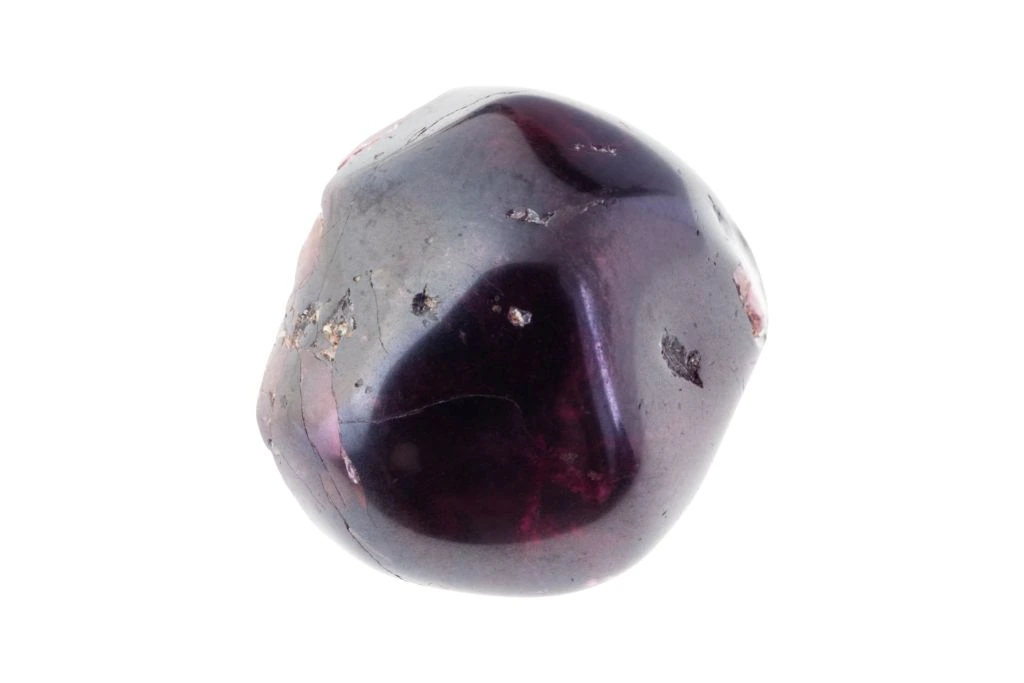Color and Appearance of Almandine Garnet
Almandine garnet is renowned for its deep, rich red color that ranges from dark burgundy to vibrant crimson. This striking hue is one of the most distinctive features of this gemstone, often appearing almost black in larger specimens due to its color intensity. Under proper lighting, almandine garnet reveals its true beauty, showcasing a spectrum of red tones that can sometimes exhibit slight purple or brown undertones.
Crystal Structure
As a member of the garnet group, almandine possesses a cubic crystal system. It typically forms dodecahedral or trapezohedra crystals, which are often well-formed and can be quite large. The crystal faces are usually smooth and lustrous, contributing to its overall appeal. In some cases, almandine garnets may also occur as granular masses or as individual grains within metamorphic rocks.
Physical Characteristics
Almandine garnet is known for its hardness, ranking 7-7.5 on the Mohs scale. This high hardness makes it resistant to scratches and ideal for use in jewelry. The gemstone also exhibits a vitreous to resinous luster, which enhances its brilliance when cut and polished. Almandine is also notable for its high specific gravity, giving it a satisfying weight in hand.
Unique Features
One of the most intriguing aspects of almandine garnet is its pleochroism, a optical phenomenon where the crystal appears to change color when viewed from different angles. This effect is subtle in almandine but can add depth and complexity to its appearance. Additionally, some almandine garnets may display asterism, a star-like optical effect, when cut as cabochons. This rare feature, caused by oriented needle-like inclusions, creates a captivating six-rayed star on the stone’s surface.
Historical and Cultural Significance of Almandine Garnet
Almandine garnet has been prized throughout history for its deep red color and durability. Ancient Egyptians used it in jewelry and as a protective talisman. In medieval Europe, it was believed to illuminate the night and provide guidance. The stone was also popular in Victorian-era jewelry, often featured in intricate designs and mourning pieces.
Metaphysical Associations
In the realm of crystal healing, almandine garnet is associated with grounding, strength, and courage. It is believed to stimulate the root chakra, promoting a sense of security and stability. Many practitioners use this stone to enhance willpower, boost self-confidence, and overcome emotional obstacles. Almandine is also thought to provide protection against negative energies and foster a sense of inner peace.
Common Uses and Benefits
Today, almandine garnet is widely used in both jewelry and industrial applications. Its hardness makes it suitable for everyday wear in rings, pendants, and earrings. In the industrial sector, it is used as an abrasive in waterjet cutting and sandblasting. Metaphysically, people often carry almandine garnet as a pocket stone or wear it as jewelry to harness its perceived benefits. It is believed to aid in physical vitality, improve circulation, and support the body’s natural healing processes. Some use it in meditation practices to enhance focus and spiritual growth.
Modern Applications
In recent years, almandine garnet has gained popularity in alternative healing practices. It is sometimes used in crystal grids for manifestation and energy work. The stone is also incorporated into skincare products, with some believing it can promote skin rejuvenation and vitality. In the tech industry, synthetic almandine garnets are used in certain types of lasers and optical devices due to their unique properties.

